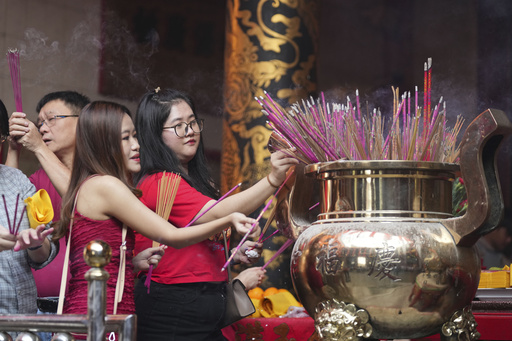
YANGON, Myanmar — Amidst an ongoing civil war between supporters and detractors of Myanmar’s military government, citizens came together to celebrate an aspect of their culture that unites them all: thanakha. This traditional yellowish-white cosmetic made from the ground bark of specific trees has become a cherished element in the daily routines of many Myanmar people.
In Myanmar, it is routine for women and children to adorn their faces with thanakha after morning showers or throughout the day and prior to sleep, applying it on various parts of their bodies such as the cheeks, nose, forehead, neck, forearms, and shins. Additionally, men are not exempt from this practice, often spotted with the paste on their faces. The tradition has gained international attention, as Myanmar seeks to have thanakha listed as part of UNESCO’s Intangible Cultural Heritage.
This unique cosmetic’s origins stretch back over a millennium. Evidence of its use can be found in ancient murals located within 11th-century temples in Bagan, which is designated as a UNESCO World Heritage site. Thanakha is derived from the bark of various species of tropical sandalwood that thrive in the dry regions of central Myanmar, which are currently hotspots of resistance against the military.
Interestingly, those opposing the military government have also embraced this tradition. In the early protests following the military’s coup in 2021, demonstrators utilized thanakha to paint symbols of resistance on their faces, demonstrating its significance beyond mere aesthetics.
On Wednesday, a colorful event took place in a park in Yangon, Myanmar’s largest city, where around 36 social organizations culminated their efforts in a vibrant celebration of thanakha through traditional song and dance competitions. Nearby, stalls showcased items for sale, including chopped thanakha wood and beauty products made from the paste, reflecting the cultural significance of thanakha in daily life.
According to Sandar Khin, chairperson of the Myanmar Cultural Heritage Trust that organized the event, the aim was to promote the cultural importance of thanakha and garner international recognition.
The effort to include thanakha on the UNESCO list of Intangible Cultural Heritage began in March 2020 but faced setbacks due to incomplete documentation. Now, in collaboration with the military government’s Ministry of Religious Affairs and Culture, a renewed submission is planned for completion by the end of March.
If successful, thanakha will join the ranks of Myanmar’s distinguished cultural elements, marking it as the country’s second entry on UNESCO’s intangible cultural heritage list, following last December’s recognition of the traditional water festival, Thingyan. Additionally, Myanmar has designated the full-moon day of Tabodwe, which corresponds to the 11th month in the traditional calendar, as “Myanma Thanakha Day,” further solidifying its place in the country’s cultural identity.

